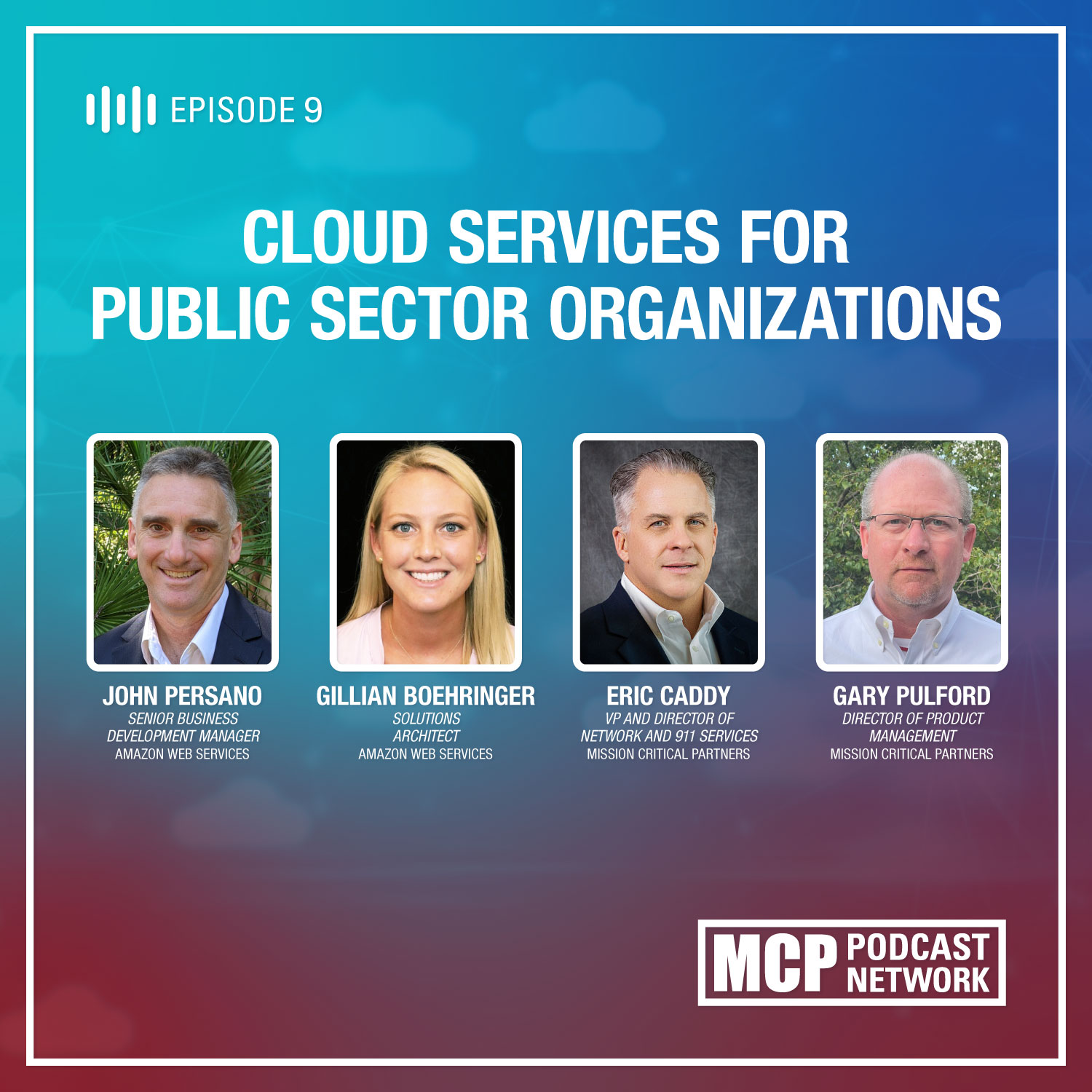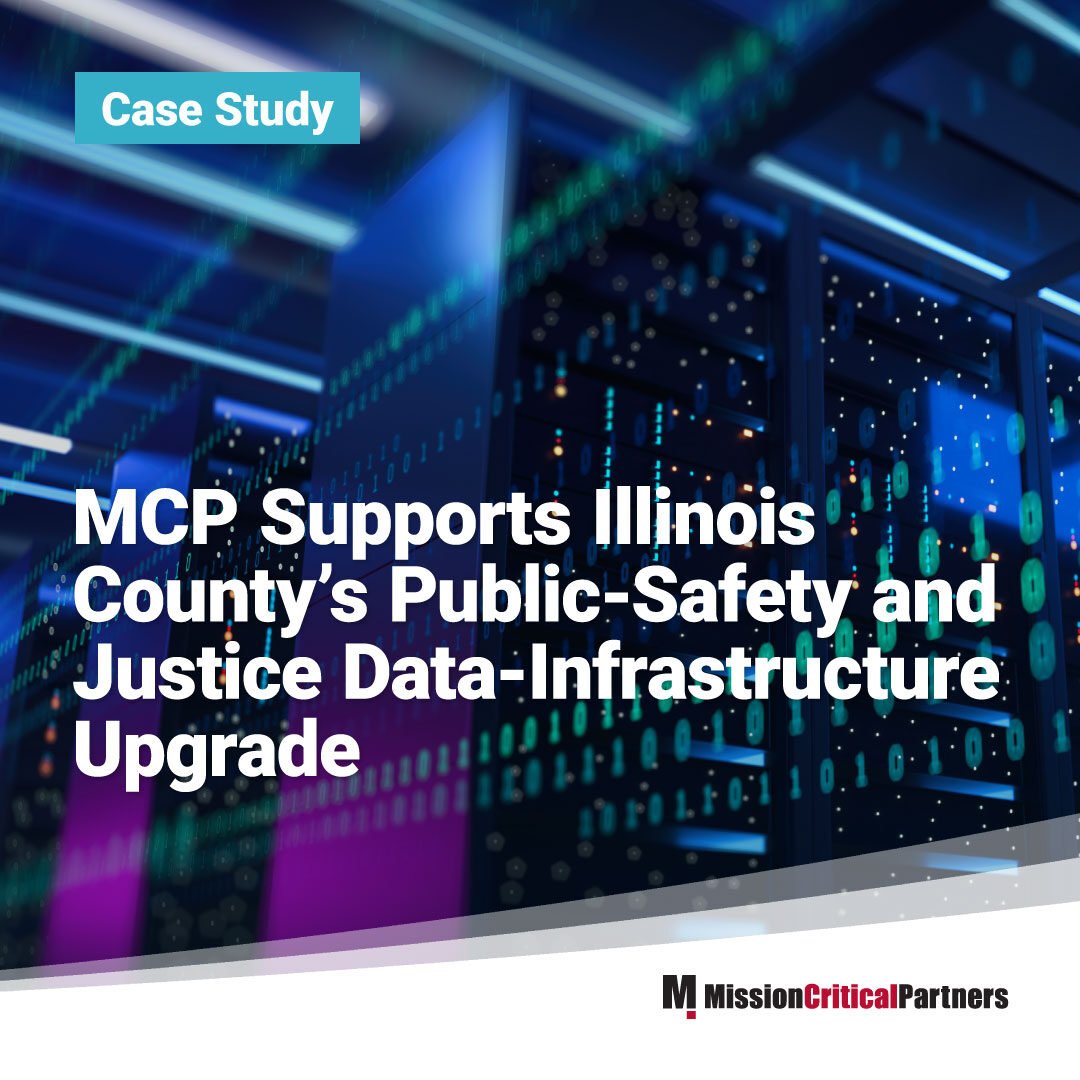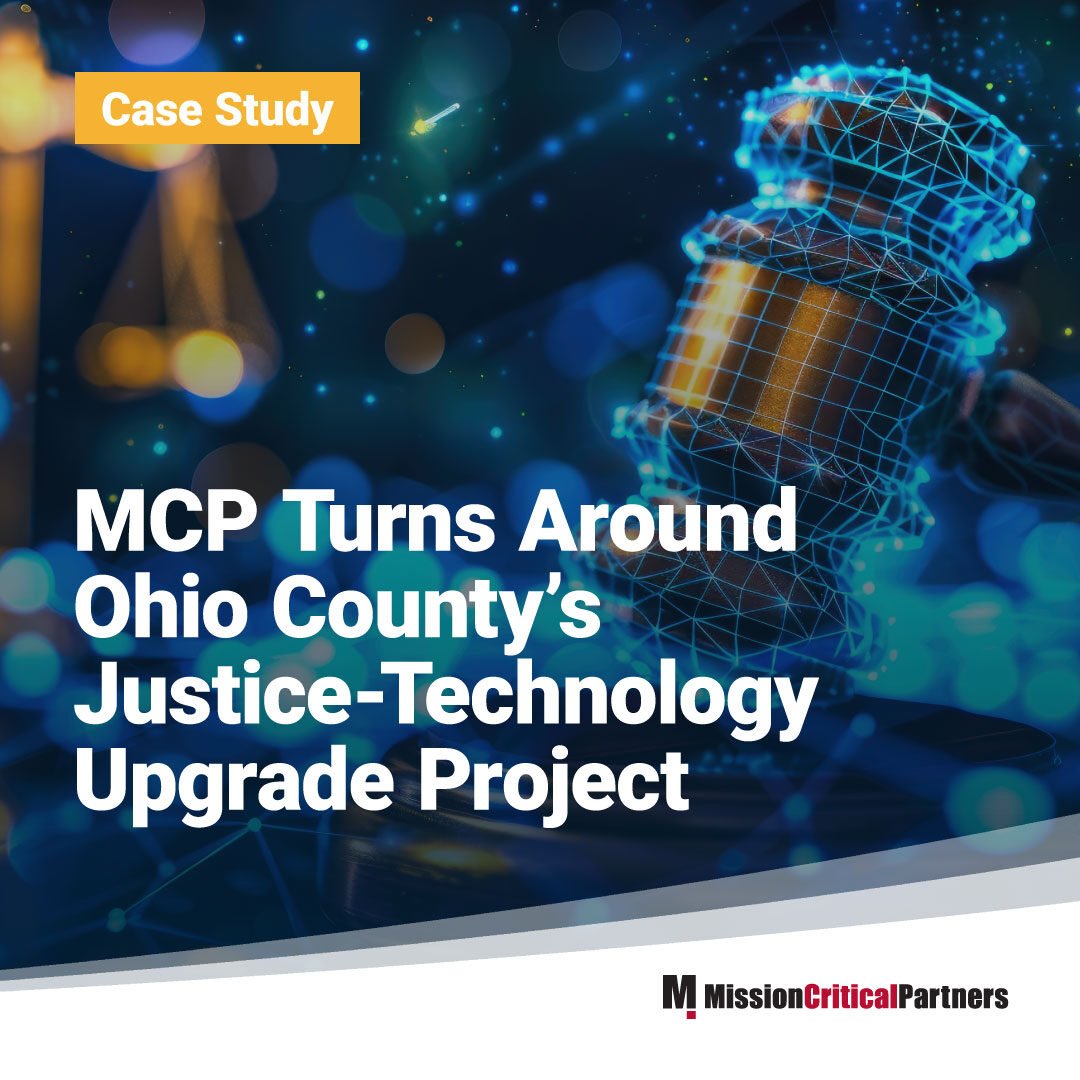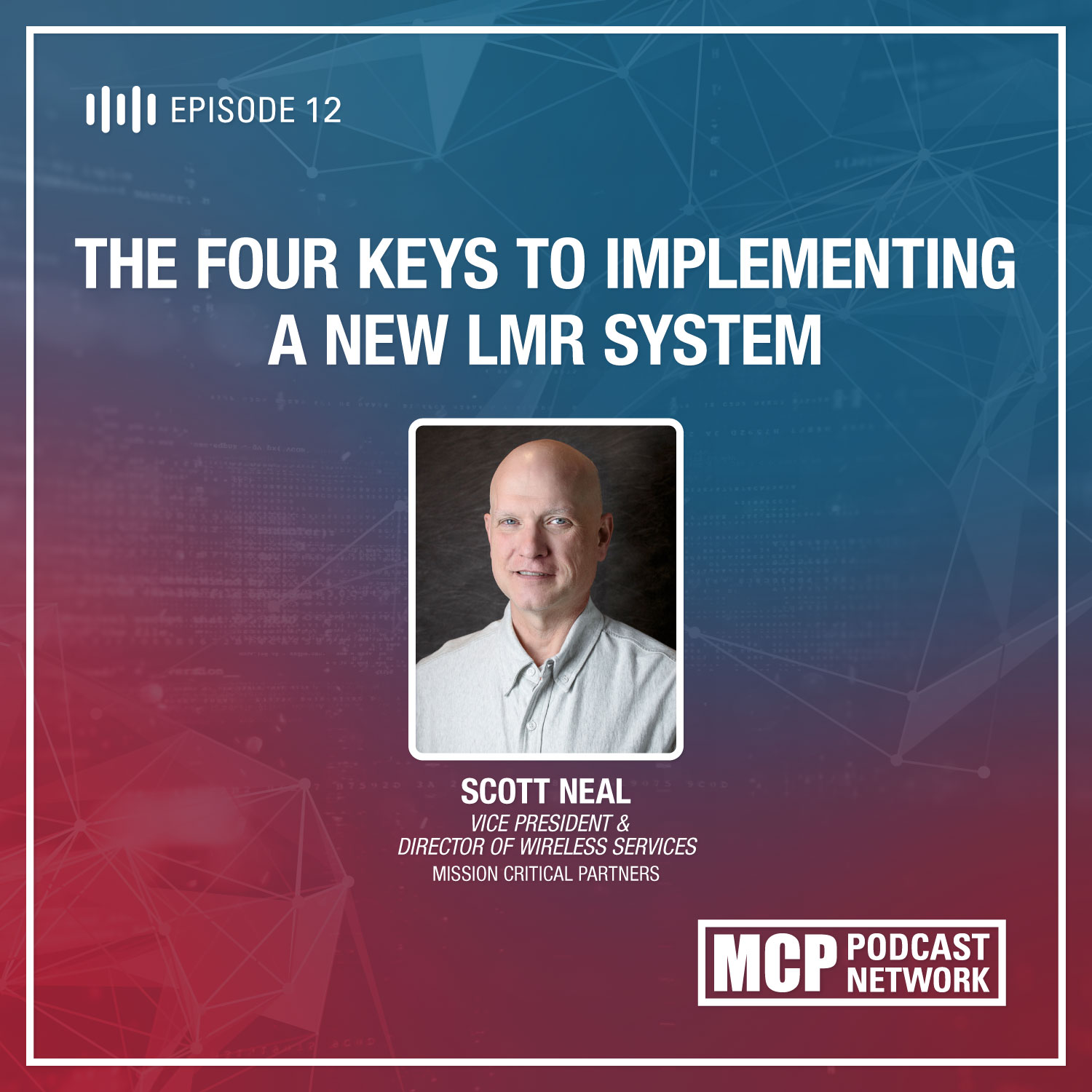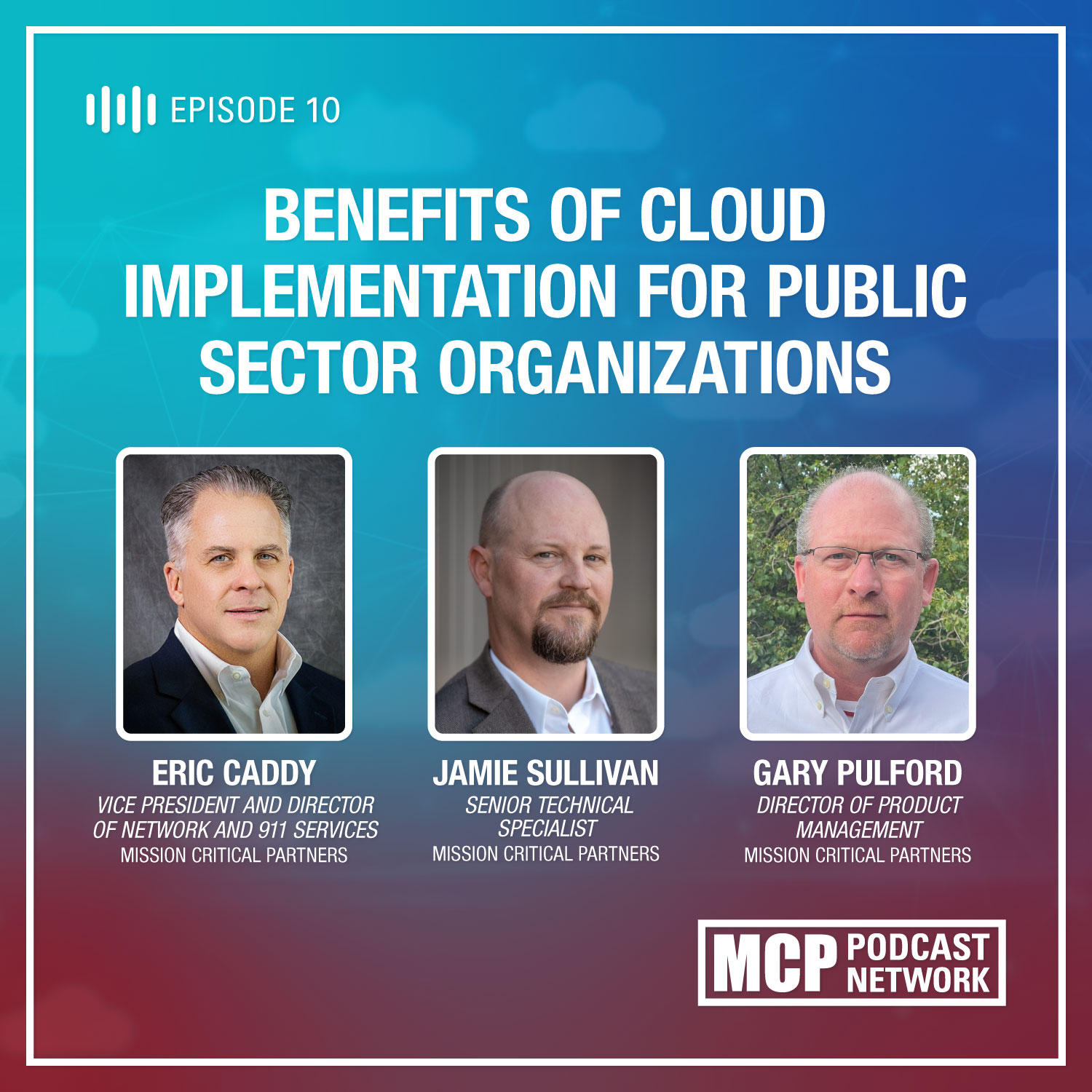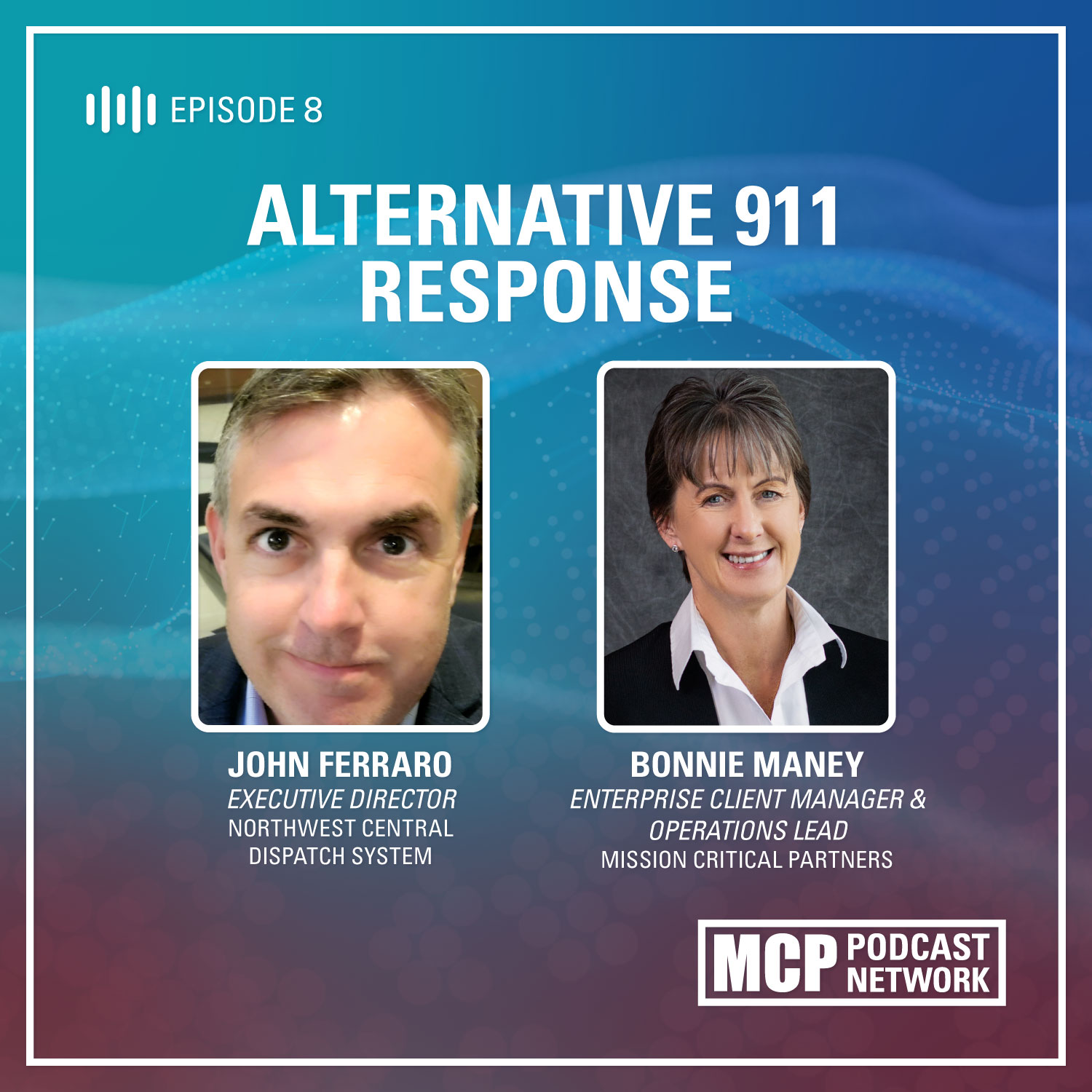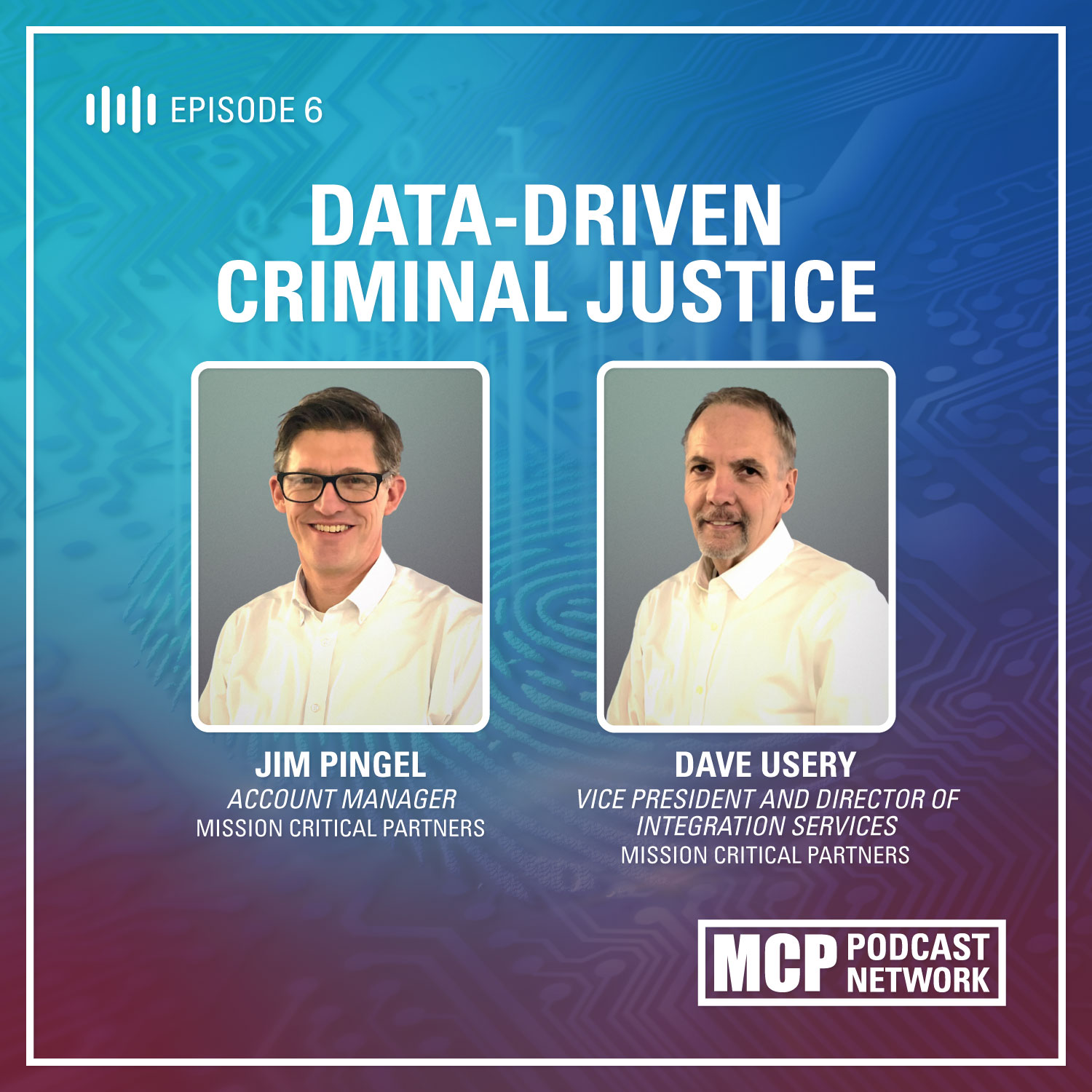MCP Podcast Network Episode 9: Cloud Services for Public Sector Organizations
Mission Critical Partners' informational podcast series features the firm’s subject-matter experts and other industry leaders exploring a wide range of timely topics pertaining to mission-critical communications.
In this episode of the MCP Podcast Network, we present a high level overview of cloud implementations for public sector organizations. We are joined by two Amazon Web Service (AWS) industry thought leaders, John Persano, senior business development manager, and Gigi Boehringer, solutions architect. Eric Caddy, vice president of network and 911 services, and Gary Pulford, the director of product management, both from MCP, also are featured.

